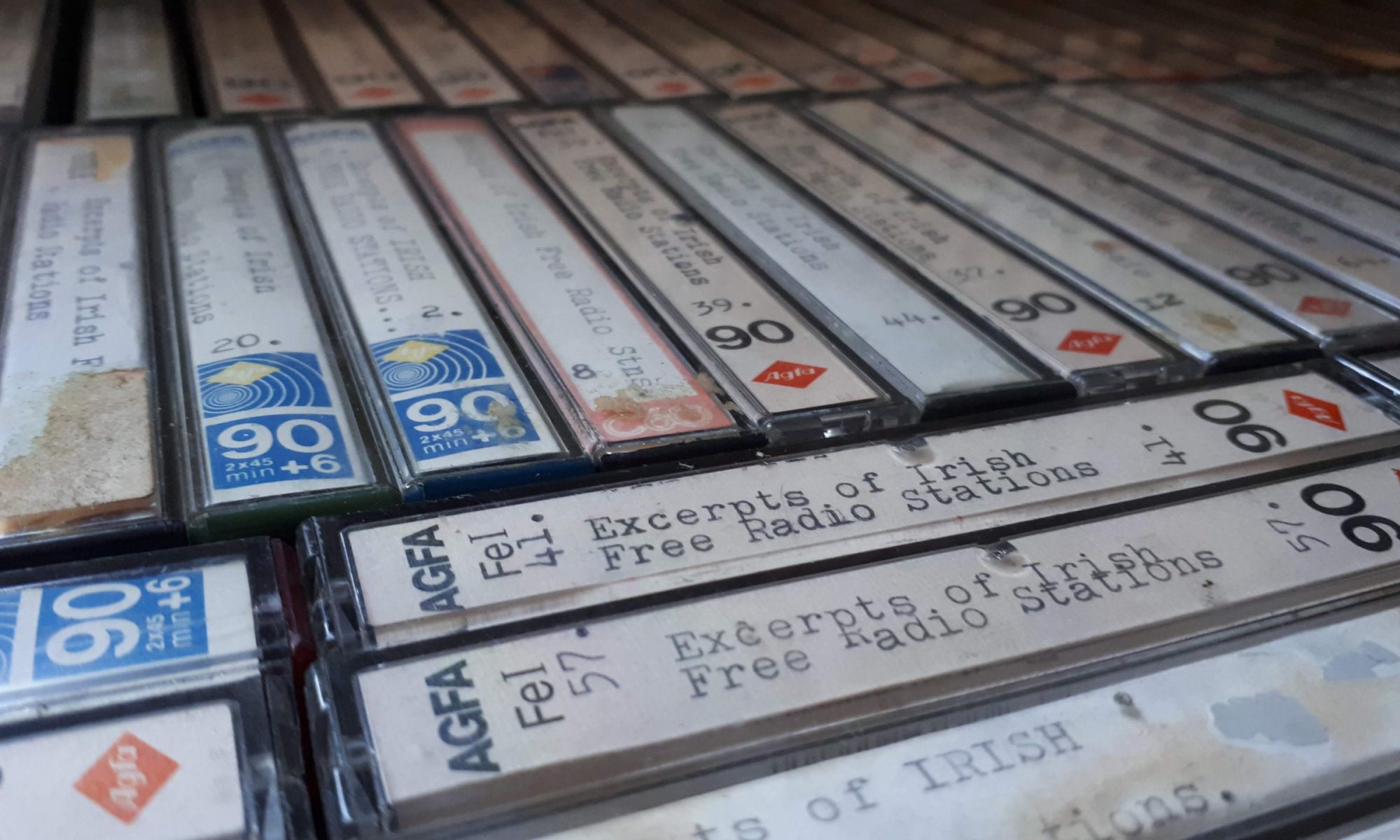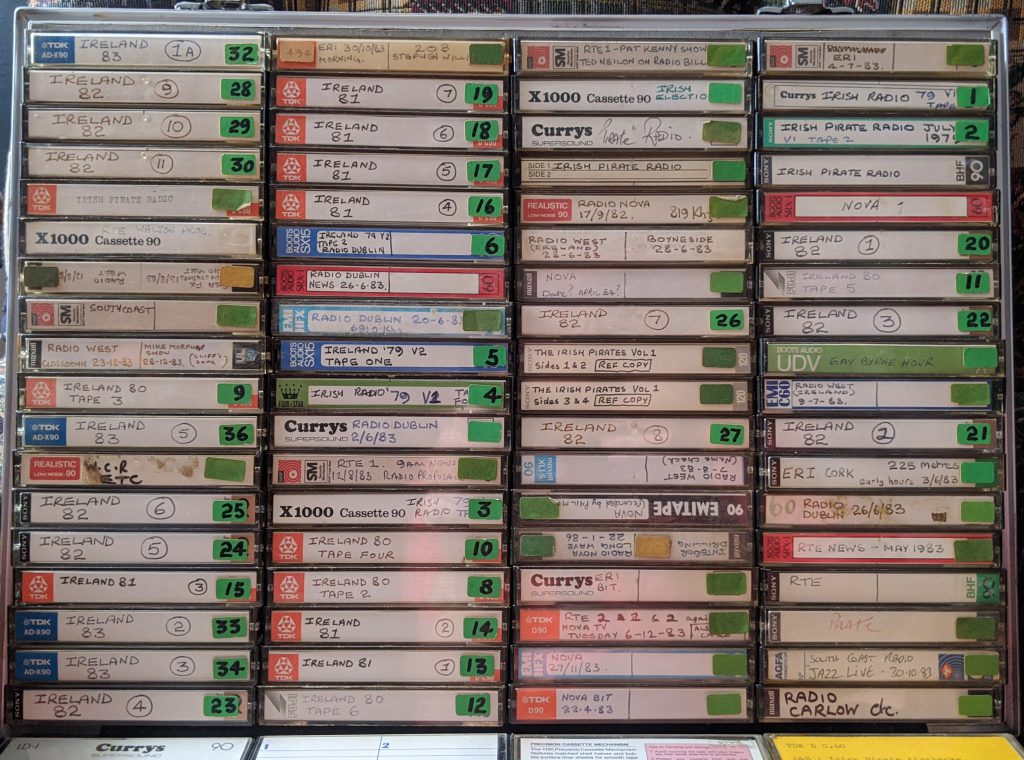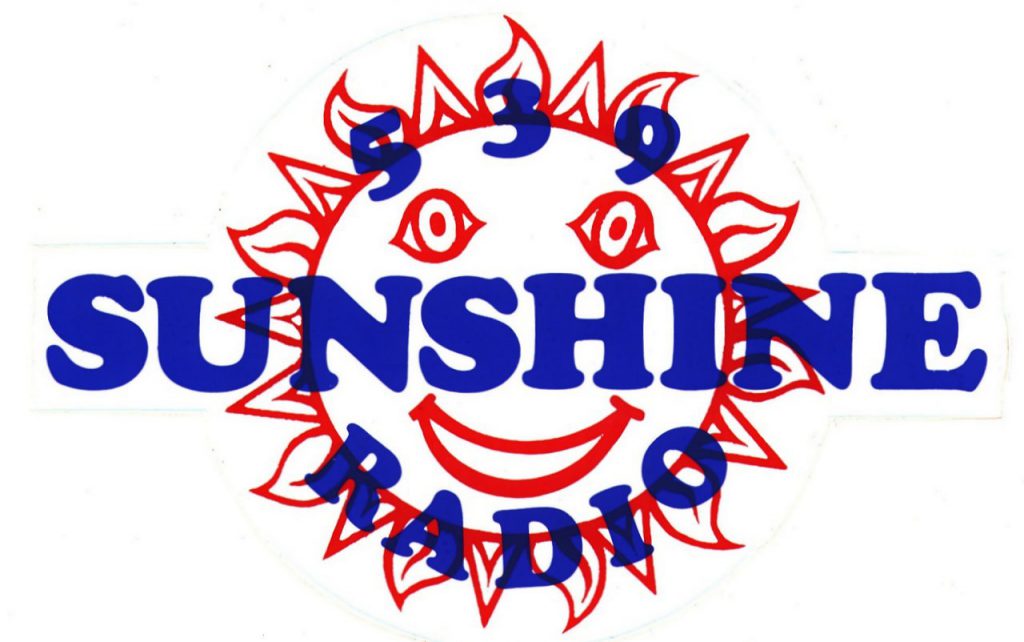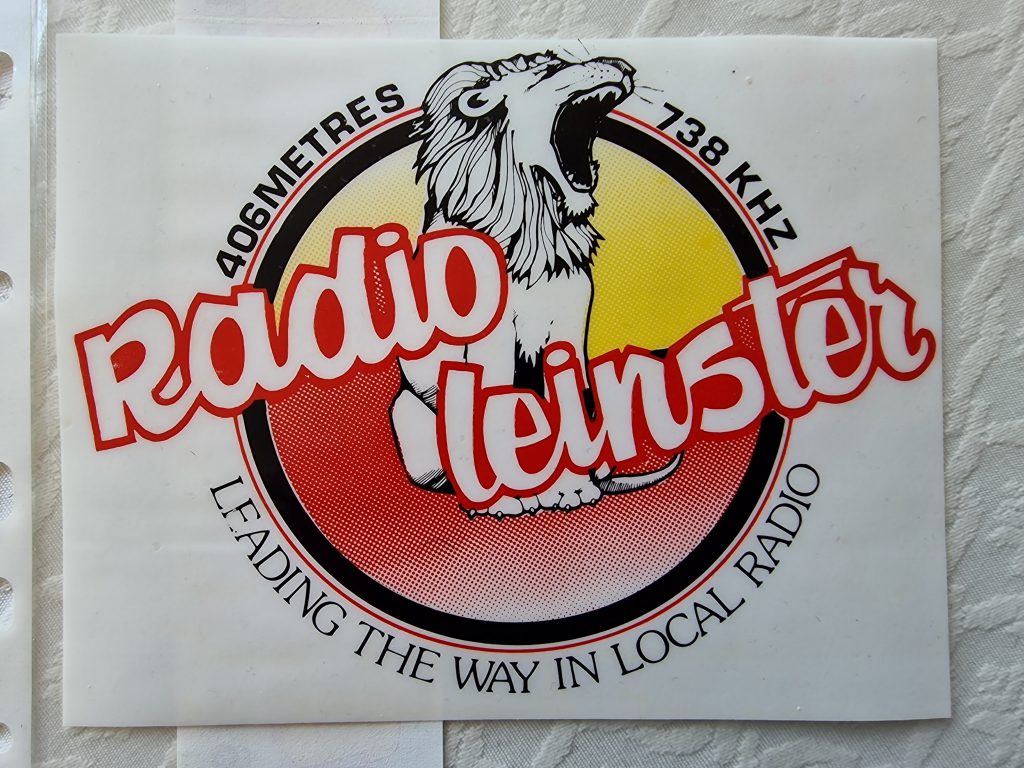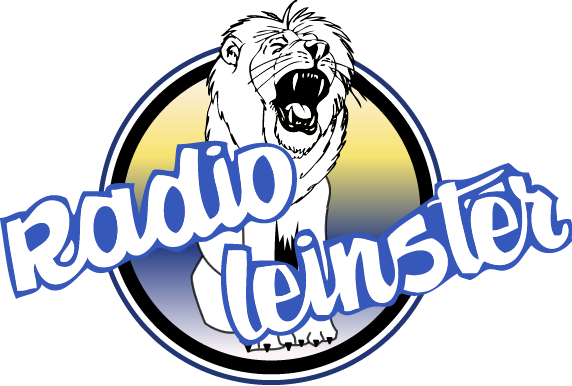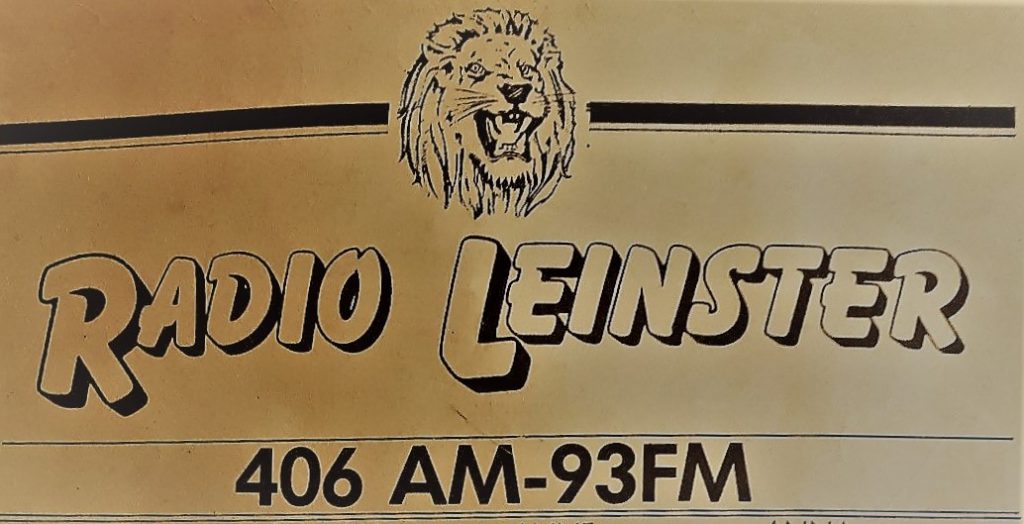Podcast: Play in new window | Download

This early recording of Sunshine Radio features two big names in the radio business since the 1970s, Declan Meehan and Stevie Dunne (Stevie Gordon). Made from 531 kHz AM (announcing 539 metres) from 1323-1410 on 12th February 1981, Declan’s lunchtime programme includes the Call and Collect competition based on a car registration number and various adverts, including one for the Sands Hotel in Portmarnock where Sunshine was based. Declan is followed at 2pm by Stevie, who had previously worked at the offshore station Radio Caroline. He would go on to work in other Irish pirates such as Radio Nova and South Coast Radio in Cork. Listen here to an interview with Declan about his radio career from his time at Sunshine.
There is some co-channel interference on this recording as it was made in Scotland by Ken Baird, outside the core Sunshine AM area. Thanks to John Breslin for the donation.
